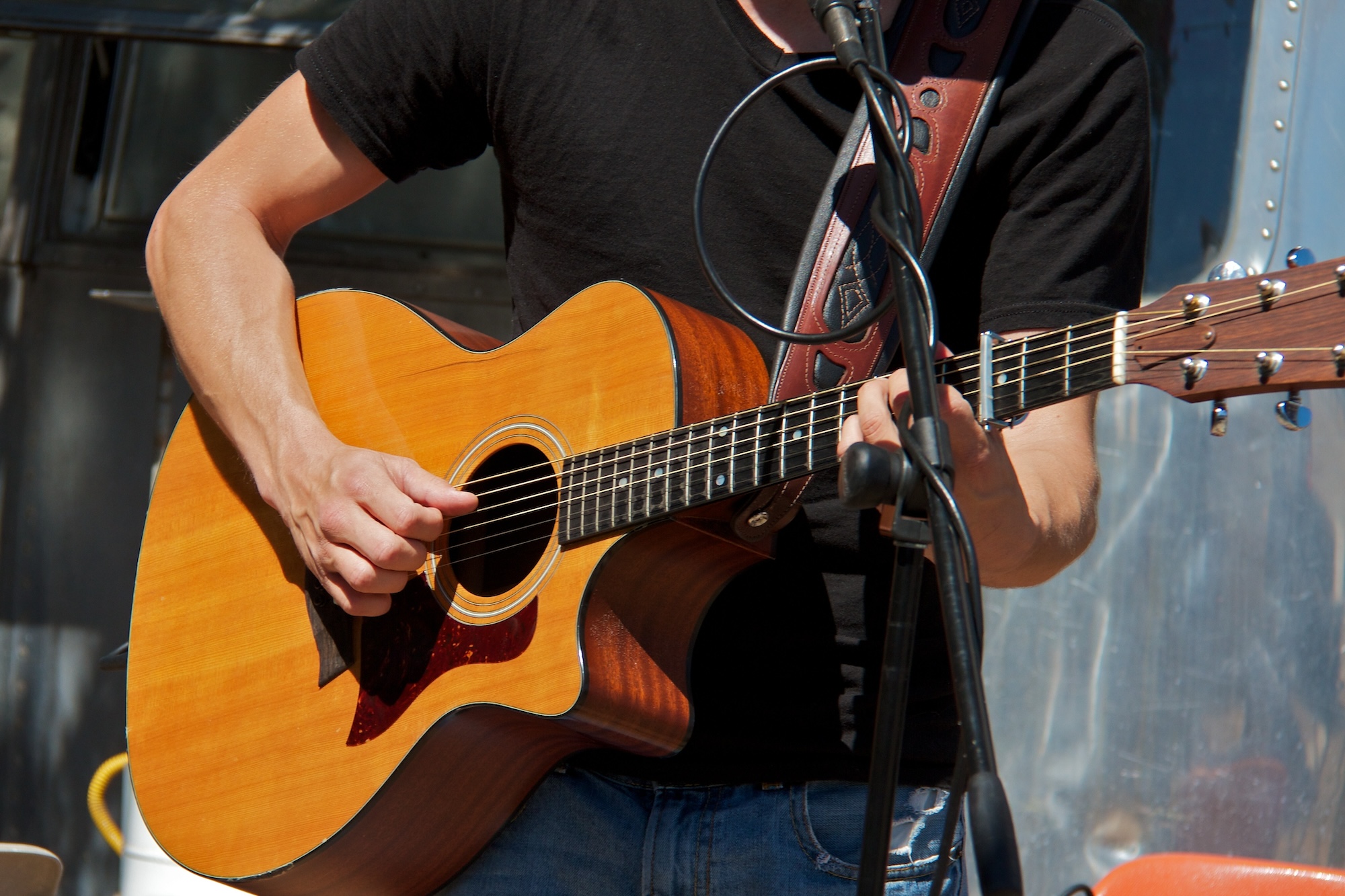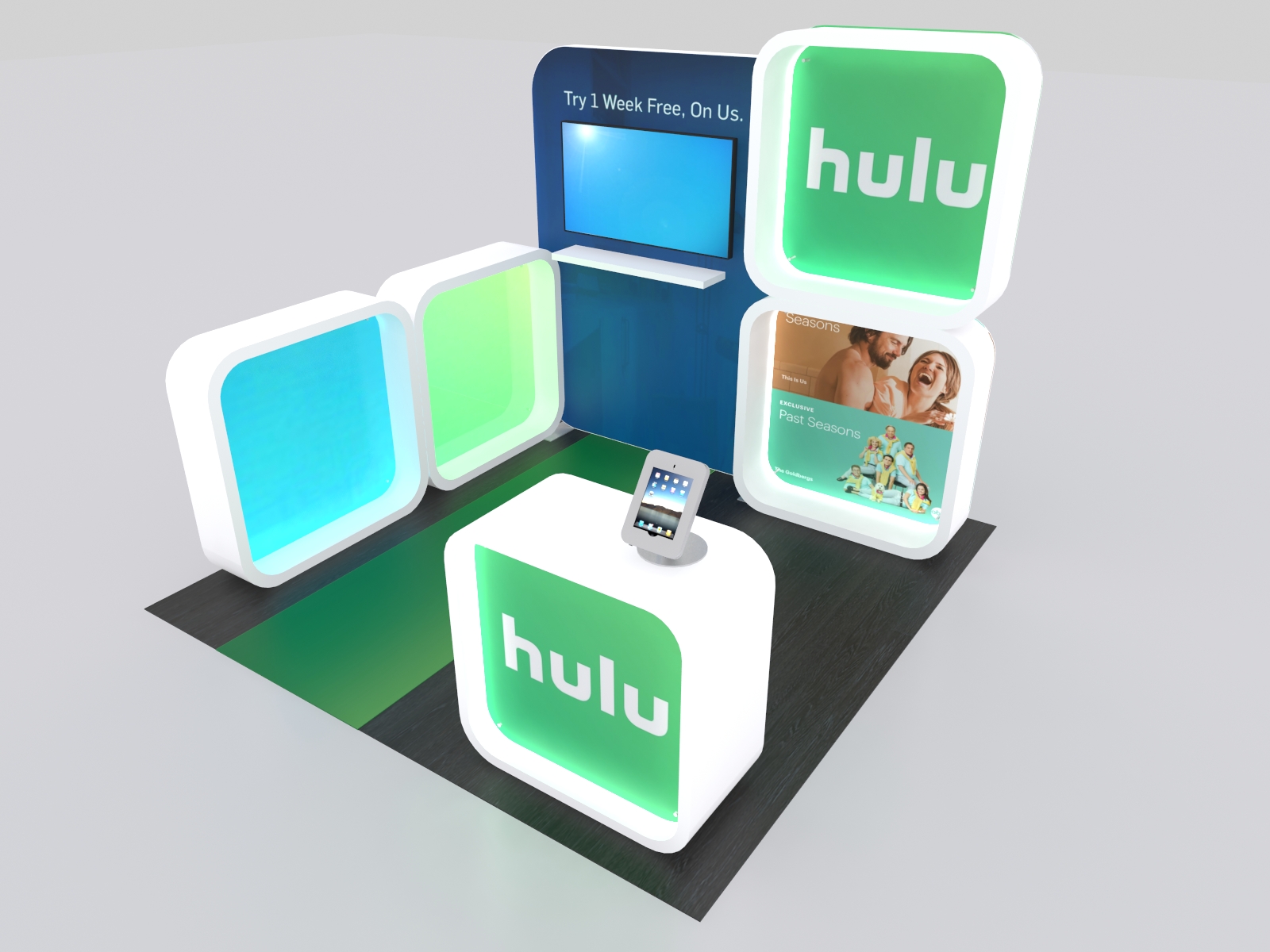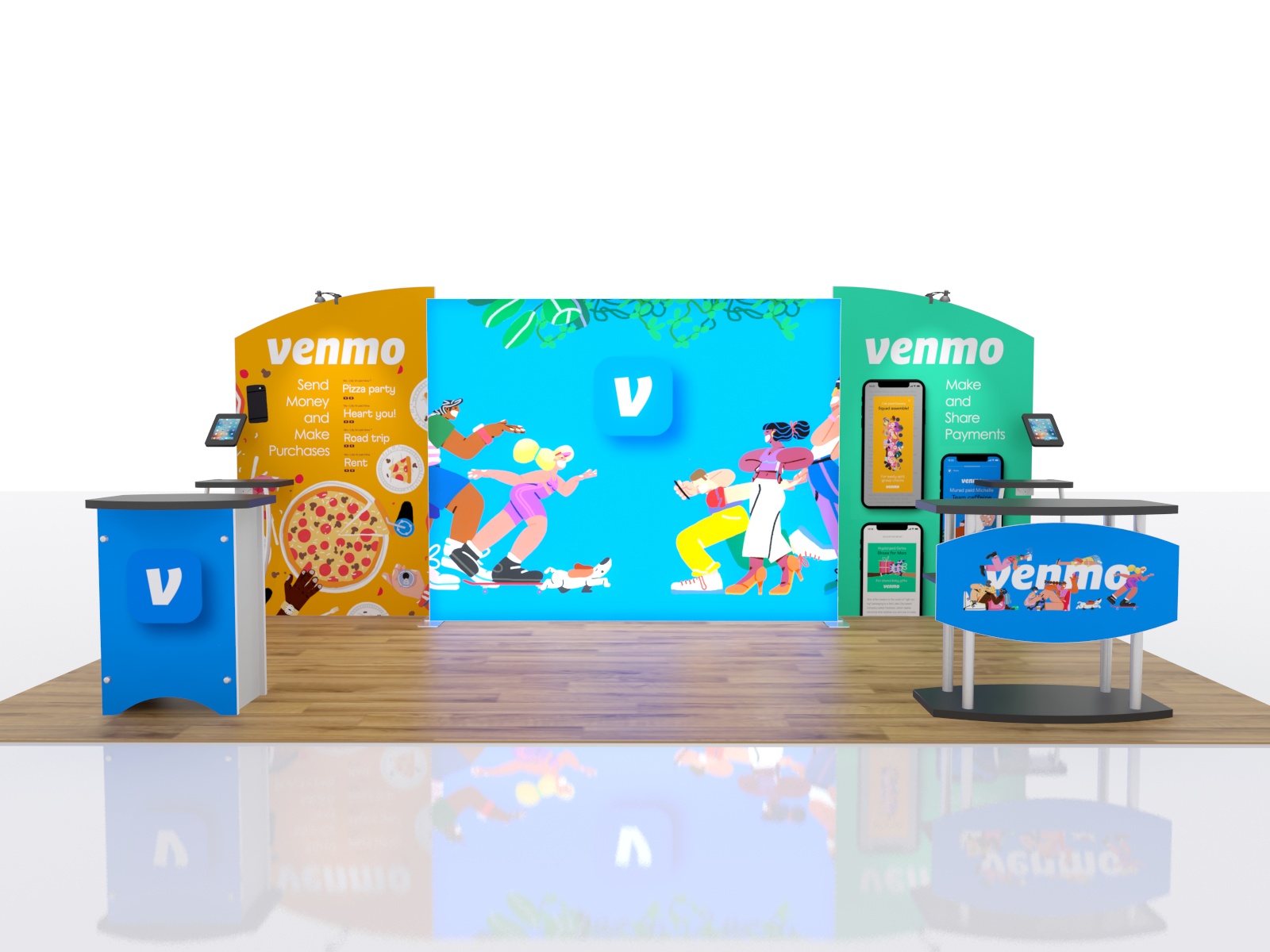Let’s start with the basic definition of “What is an event?” An event is a planned gathering ranging from something grand and public to something small and more personal. Events can be categorized by their purpose, size, and target audience. For example:
- Social Gatherings or Activities: This could be anything from a birthday party or wedding to a conference or concert.
- Specific Contests or Competitions: This could be a sporting event like the Super Bowl or a more niche competition like a hackathon.
- Organized Activities for a Group: This could be a work retreat, a religious service, or a fundraiser.
Event branding essentially creates a unique identity for the event which resonates with the target audience. Think of it as the event personality. At trade shows and conferences, strategic branding can significantly impact audience engagement and brand recall.
The Importance of Event Branding at Trade Shows
Every event has a personality, either by chance or by design. And because no event marketer wants the personality to be by chance, defining it serves as the strategic foundation for all future decisions. Trade shows, in particular, because they are industry or company-specific, often have distinct identities.
For example, the National Cardiologist convention won’t have the same feel as the realtor show. CES (Consumer Electronics Show) in Las Vegas doesn’t have the same vibe as Pack Expo in Chicago. Trade shows in Houston are different from exhibitions in Dusseldorf. Which makes sense. They should reflect the needs of exhibitors and end-users who attend those shows.
Crafting Your Event Branding Strategy
Here’s a breakdown of what event branding entails:
- Core Elements: This includes a catchy name, logo, color scheme, fonts, and even imagery. These elements all work together to create a cohesive visual identity.
- Messaging: This involves crafting clear and consistent messaging that conveys the event’s purpose, value proposition, and the kind of experience attendees can expect.
- Overall Experience: Event branding goes beyond just the visual aspects. It encompasses the entire attendee journey, from pre-event promotion to on-site experience and post-event follow-up. Every touchpoint, from registration materials to staff interactions, should reflect the event’s brand.
The goal of event branding is to build recognition, attract attendees, and create a lasting impression. A strong event brand can help you achieve various goals, such as:
- Increased Attendance: A well-branded event stands out from the crowd and attracts attendees who are interested in the specific value proposition it offers.
- Enhanced Brand Awareness: Your event branding can act as an extension of your company’s overall brand, promoting brand recognition and strengthening its image.
- Improved Customer Loyalty: A positive event experience fosters positive associations with your brand, leading to customer loyalty and advocacy.
Designing Branded Displays for Trade Show Success
All trade show displays are branded displays. Or should be. Designing an exhibit to maximize your trade show success isn’t the same as “How to replace your car’s brake disc pads.” There’s no one answer and no uniform step-by-step process. Designing a branded display depends on more variables than can be reasonably addressed. However, that doesn’t mean there aren’t some common steps.
Planning and Goals:
- Define Your Goals: What do you want to achieve at the trade show? Is it brand awareness, lead generation, sales, or something else? Once you know your goals, you can tailor your display design to achieve them.
- Know Your Audience: Who are you trying to reach? Understanding your target audience will help you create messaging and visuals that resonate with them.
- Choose the Right Supplier: This might be the most important decision. The right exhibit house should be much more than the designer and builder of your exhibit. They should be your exhibit marketing partner. Their trade show knowledge can be the key to consistent trade show success, and for maximizing the return on your trade show budget.
Design Considerations:
- Be Distinctive: Trade show floors can be visually overwhelming. Use bold colors, captivating visuals, and a clear, concise message to grab attention and make your display memorable.
- Be Brand Consistent: Your display should be instantly recognizable as part of your brand. Use your brand colors, fonts, logo, and messaging consistently throughout the design.
- Be Purposeful: Too much information or clutter is worse than too little. Keep your message, both visuals and text, clear and concise. Exhibitors should know at a glance who you are, what you do, and what problem you solve. If you do nothing else, do those three things.
Display Functionality:
- Choose the Right Design: There are many types of trade show displays available, from pop-up banners to elaborate custom booths. Consider your budget, space limitations, and portability needs when choosing a display format.
- Anticipate Traffic Flow: Design your display with traffic flow in mind. Make it easy for attendees to navigate your booth and find the information they’re looking for.
- Consider Interactive Games/Video/Contests: Incorporating interactive elements into your display, such as product demos, touchscreens, or contests will engage attendees and make your booth more memorable.
Maximizing Visibility with Branded Signage
You go to a trade show to be seen. So be seen. There are obvious “be seen” choices at any trade show and some not-so-obvious ones as well. Before we explore this, let’s review what being seen means.
Yes, big graphics with your logo and tagline are important. Adding a hanging sign over your booth space can increase your visibility in the show hall. But those are the bare minimum.
We’ll divide how to maximize your visibility at a trade show into two categories: “Well Duh?” and “Yeah Right!”
Well Duh?
- Hanging Signs
- Graphics, Including Backlit and Non-backlit Graphics
- Promotional Product Giveaways
- Branded Logo Apparel
- Monitors, Video Tiles, and Tablets with Videos, Apps, and Website
- Social Media
- Games/Activities
Yeah Right!
- Printed Custom Flooring
- Show Sponsorships, Including Incentives like Badge Holders, Bags, etc.
- Contests and Promotions
- Educational Seminars/Classes taught by your staff
- Attending Receptions and Meet and Greets
- Personalized Lead Retrieval Software with Auto-emails, a Product and Services PDF Library, and Device Agnostic Software.
- Offsite Meetings, Events, and Entertaining
Explore the importance of branded signage in event branding, providing tips on how to design and place signage for optimal engagement and brand exposure.
Trade Show vs. Conference Branding: Tailoring Your Approach for Different Events
Conferences and trade shows are both large events focused on a specific industry or topic. While the core purposes differ, there’s often some overlap between conferences and trade shows. Many conferences incorporate a trade show component, with vendors showcasing their products alongside the educational sessions. Likewise, some larger trade shows might have workshops or seminars alongside the booths.
Focus:
- Conference: The primary focus of a conference is education and information sharing. Attendees gather to learn about the latest trends, research findings, and best practices in their field. Conferences often feature presentations, workshops, and panel discussions led by industry experts.
- Trade Show: A trade show is all about product or service promotion. Companies use booths to showcase their offerings to potential customers and generate leads. There’s a strong emphasis on sales and networking with industry professionals.
Target Audience:
- Conference: Conferences typically attract a broader audience, including professionals from various companies, researchers, and students.
- Trade Show: Trade shows are geared more towards industry insiders and decision-makers with buying power. The general public may not be welcome at all trade shows.
Ambiance:
- Conference: Conferences tend to have a more formal atmosphere, with scheduled sessions and presentations.
- Trade Show: Trade shows are generally more fast-paced and interactive, with booths bustling with activity and attendees collecting brochures and promotional materials.
Branding:
- Conference: If a conference doesn’t have a trade show component, your branding must be more targeted to educational sessions, presentations, receptions, and graphics in the meeting spaces. Sponsorships are key, since they are often linked to topics or sessions that align with your company’s products or services. Informal and formal meetings/conversations are crucial since they add information, context, and personality.
- Trade Show: The branding heavy lifting happens in the booth with graphics, videos, and face-to-face interactions with existing and potential clients. All too often, however, exhibitors stop there and don’t pursue additional branding opportunities. Those include not only show-sponsored branding opportunities, like graphics in the registration area and classrooms, but also more informal events like receptions, meals, and offsite events.
Real-World Example of Impactful Event Branding

There’s a good chance you’ve heard of SXSW, otherwise known as South by Southwest, a massive event held in Austin, Texas for nine days. SXSW blends three major industries: film, interactive media, and music into one event attracting a global audience. In 2024, they announced over 450 conference sessions, a 33% increase from the previous year.
What SXSW offers:
- Conference: This is the core educational component, featuring talks, panels, and workshops led by industry leaders across various tracks like technology, film, culture, and music.
- Film Festival: Screenings of independent films, documentaries, and works from emerging filmmakers.
- Music Festival: Live performances by established and up-and-coming artists, along with industry networking opportunities.
- Comedy Festival: Stand-up routines and comedic performances.
Specific Events (beyond Film, Music & Comedy Festivals):
- Conference Tracks: Covering a vast spectrum. Some examples include sessions on artificial intelligence, social media marketing, virtual reality, documentary filmmaking, independent music distribution, and the future of comedy..
- Keynote Speeches: Inspiring talks by renowned figures in tech, entertainment, and culture.
- Exhibitions: Showcasing cutting-edge technology, art installations, and interactive experiences.
- Competitions: Film competitions, startup pitch contests, music showcases with audience awards.
- Networking Events: Meetups, receptions, and parties designed to foster connections and collaboration.
The benefits for companies who sponsor SXSX include:
- Brand Awareness: SXSW attracts a global audience of industry influencers, potential customers, and media representatives.
- Targeted Reach: For example, sponsoring a film festival track would target movie buffs and filmmakers, while a music festival sponsorship would connect you with music lovers and industry professionals.
- Networking Opportunities: Sponsorships come with access to VIP events, lounges, and networking receptions to connect with potential clients, partners, and investors.
- Product Promotion: Some sponsorships allow for on-site product demonstrations, activations, or branded experiences.
- Industry Credibility: Being associated with a prestigious event like SXSW can elevate your brand image and establish you as a thought leader in your industry.
- Lead Generation: Many sponsorships come with lead capture opportunities, This can be a valuable source of sales leads for your business.
- Positive Media Attention: Sponsoring SXSW can generate positive media coverage, further boosting brand awareness.
A sample of Past sponsors include Delta Airlines, Volkswagen, US Army, Peacock, and PepsiCo, along with many regional and Texas companies.
Elevate Your Event Branding with Exhibits NW
It’s easy to forget that a trade show is simply an event, one that happens to include hundreds and sometimes thousands of exhibitors. The importance of strategic branding couldn’t be more important as companies compete for eyeballs and foot traffic. Exhibits Northwest has over 30 years of experience in partnering with clients to achieve a cohesive trade show or conference strategy. Every situation is unique, which is why conversations matter more than clicks when choosing the right exhibit.
Our convenient location makes us the ideal choice for local companies exhibiting throughout North America and for exhibitors participating in a trade show in Portland or Seattle. Experience the Exhibits Northwest difference today, whether you need a portable modular display or a custom-branded exhibit.


